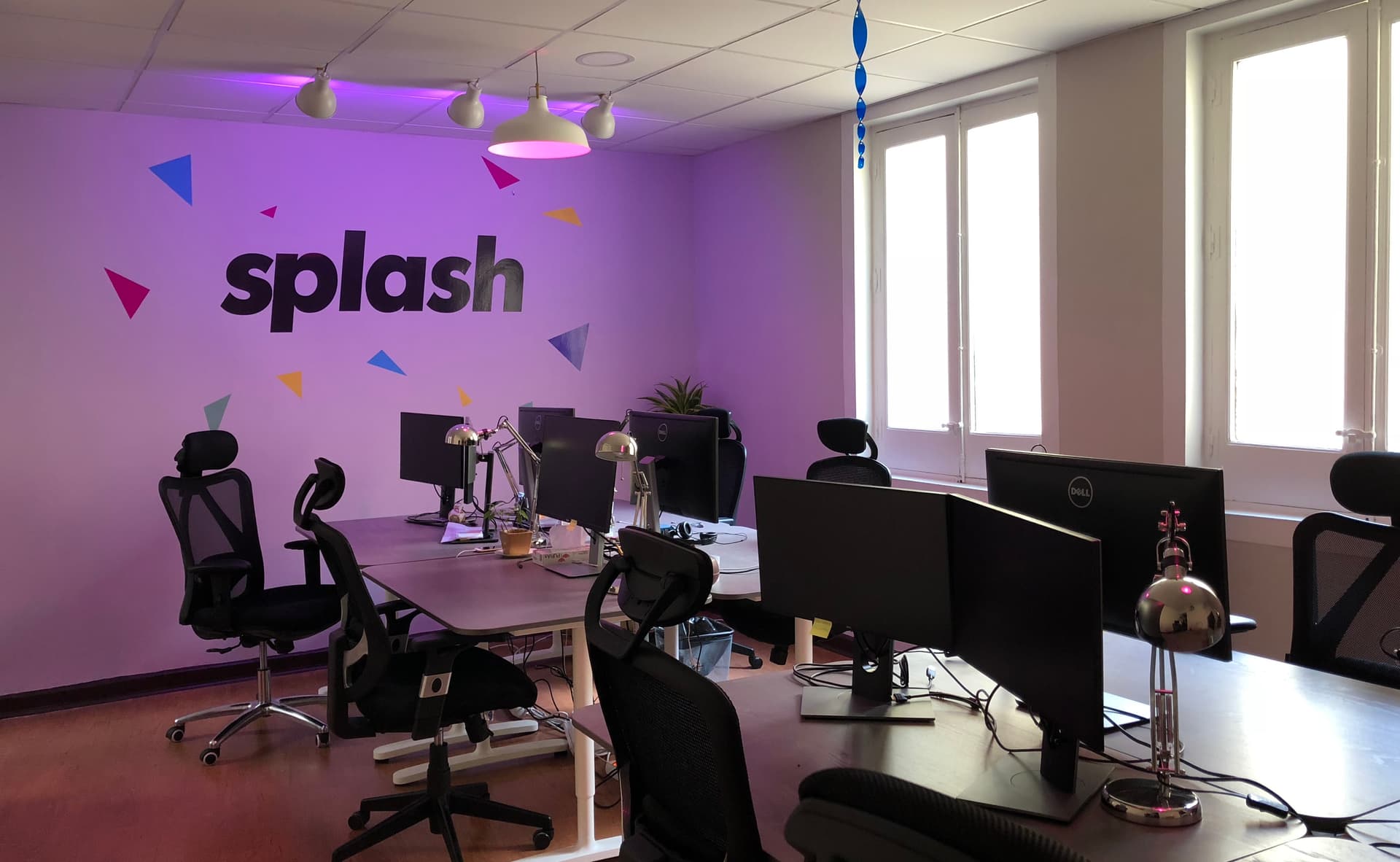So you want to build an engineering team in Spain?
Management

When I was first asked to set up Splash’s engineering team in Madrid, I had no idea how much I’d learn, not only about hiring and managing across borders, but also about culture, leadership, and myself.
People in the US have been asking me lately: How do you set up a software engineering team in Spain?
And it makes sense they’re curious. At Splash, I had the chance to build engineering teams in Madrid. In just a few years, we went from being a US-only tech org to having half our teams based in Madrid. What started as an experiment became a huge success. Both the US and Spain teams benefited (and still do) from working cross-culturally and approaching problems differently. It made us all better software engineers.
Here’s what worked, what didn’t, and what I’d tell anyone thinking about Spain as a remote hub.
Why Spain?
Competitive costs. While salaries in Spain are higher than in Latin America or Southeast Asia, it’s way more affordable than the US. You can probably hire two to three engineers in Spain for the cost of one in the US, keeping in mind that the actual cost to the company is about 33% higher than the base salary, due to the social security costs and other taxes.
English fluency. There’s a sense in Spain that speaking basic English is crucial for getting hired, and so while most university graduates aren’t bilingual, they can handle professional contexts.
Culture that clicks. Spanish people tend to be open, talkative and friendly, just like people in the US. I found it very easy to have cross-cultural collaboration between US and Spanish team members.
Skilled engineers. I’ve seen Spanish software engineers match their US and Northern European peers in skill and dedication. Many global companies have tech hubs here, which means the talent ecosystem is strong and growing.
Cultural nuances that matter
Spain values stability. Careers in the public administration are seen as the holy grail, with steady income and predictable hours. That is in contrast with the entrepreneurial, risk-taking mindset many US engineers aspire to.
It isn’t a lack of talent, it’s a different mindset. If you want to attract great people, especially those in their 30s and up, you need to understand and respect that preference for stability.
That’s why people often expect indefinite employment contracts if they’re going to join your company. These can only be offered if you’ve set up a legal entity in Spain. It’s the standard contract type: usually there’s a 6-month trial period where either side can walk away without severance. After that, the law requires severance between 20 and 33 days of salary per year worked, depending on the type of dismissal. Knowing they’ll receive this if things don’t work out is what gives Spanish employees a real sense of safety.
Key ingredients for success
These have been the things that made it work so well:
Trust from leadership. I was extremely lucky to have bold leaders who believed in me, granted autonomy, and helped me grow.
Cultural alignment matters. Embodying the company values and being able to speak passionately about the mission was crucial. I basically had to act like the founder, spreading the mission and excitement. That’s what brought people on board, even though we were in a remote office.
Reliable, personal local partners. A shoutout to Emilio, our local accountant and labor lawyer. He was hands-on, transparent, responsive, and trustworthy, everything big agencies often lack.
A guiding work framework, Scrum: given that we were spread across two or more offices, we needed a system to plan, execute, and deliver work that helped us be predictable and work easily across teams. Coming from a disorganized startup, it took a while to fully adopt Scrum. But once we got it, it made us predictable and reliable.
Local recruiting firms. Big agencies were a miss. Small, focused firms helped us find the right people more effectively. Shoutout to Akuaro here that brought a handful of the best hires we did.
Legal setup basics
A couple practical points:
Entity ownership. The person setting up the entity typically becomes its administrator, carrying both legal and financial liabilities. With a small, aligned team this isn’t a big deal, but if disputes arise, it can become a heavier responsibility.
“Autónomo” status. That administrator also needs to register as self-employed (autónomo), a separate tax status in Spain. It involves quarterly filings and interactions with the tax office. Having a labor lawyer and accountant handle this is essential, otherwise it’s a major distraction.
What else made a difference
We paid slightly above market salary. It made sourcing and retention easier. People still valued other things and occasionally left the company for other reasons, but at least in regards to compensation we mostly had everyone satisfied.
Business trips. We also had leaders and colleagues occasionally come from New York to Madrid: the CEO, CTO, VP of Engineering, VP of People, and a few Product Managers. And once a year, we took the entire team to New York or another destination for a company-wide offsite.

What didn’t help
The US–Madrid divide. At times, there was a tendency toward "us vs. them." Both sides could find reasons to distrust one another, and differences in work rhythm and office dynamics created friction. We worked hard to close that gap, and in the end we were actually more united than some teams working in the same office.
Local banking headaches. Opting for a big local bank like BBVA introduced slow processes and bureaucracy. Today, I’d go for a digital-first neo-bank.
Time zone difference. Having a 6-hour offset between Madrid and NY made it tricky to find available times for meetings, and pushed us to design teams to be as co-located as possible. We saved the timeframe 3PM-6PM Madrid time / 9AM-12PM NY time to have all general meetings like the All Hands, the product demos, etc. and called it The Golden Hours 🌅.
Mistakes
I think we didn’t make any big mistakes thanks to growing at a relatively slow pace, doubling the team headcount every year (first 3, then 6, then 10, and eventually 20 people in total). That pace gave me time to grow into the role, earn trust from leadership, and keep our culture.
Of course we had some downturns. There were a couple of wrong hires along the way, friction between individuals that worked in different locations, US-based PMs that didn’t fit with their Spain-based tech teams, and at times too much focus on process over outcomes, partly because the company mission wasn’t always clear.
But none of these challenges were particular to being an offshore office. They were more related to the company’s evolution and people dynamics. They were manageable because we had a very communicative culture, and because we had great department leadership and two extraordinary managers in Spain, who eventually went on to manage US-based team members as well. Shoutout to Zlati and Adrià.
The importance of belonging
This only worked because everyone in Spain felt like true Splashers. Without that sense of belonging, we wouldn’t have gone the extra mile.
That said, at first it took some effort to get US-based team members and HR to see Splash as a company with multiple offices, but once they started doing it, things went smoothly on our end. Thank you to those culture champions in the US that helped us feel integrated and considered as if we were there!
This was extremely important. That’s why I declined the option to run the Spain team as an agency, taking projects from Splash as well as from other clients. I told our leadership clearly that we needed to feel like Splash, not like another company working for Splash. And I’m glad we could do that, because thanks to that we could inherit all the company culture, trust and authority that came from Splash in NY.
The takeaway: how to replicate
Find someone deeply aligned with your mission and values, ideally committed for at least three years and that has skin in the game (stock).
Give them trust, autonomy, proper resources, and hold them accountable.
Coach, don’t micromanage. Help them grow into the role.
Invest in cultural alignment. Use time and resources to unite the local team with the parent company’s vision, values, and rhythms.
In other words, don’t think of it simply as “hiring a bunch of software engineers in Spain” and things will magically work. It takes focus, intention and leadership.
Final thoughts
Looking back, this experience transformed me. It accelerated my growth as a leader, as an entrepreneur, and gave me the confidence that I could run things. Financially (thanks, stock options) and personally, it was an incredible journey.
So when people in the US ask me “how do you set up a team in Spain?”, my answer is: you don’t just hire engineers. You build trust, you bridge cultures, and you make people feel part of something bigger.
If you’d like to hear me talk more casually about this, I recorded a podcast episode with Fernando Agüero back in 2019 that dives into how I did it while learning how to manage people.
I’m forever grateful to the brave ones who joined the Spain office, especially back when it was practically just me and the promise of a fun, fast-growing startup.
